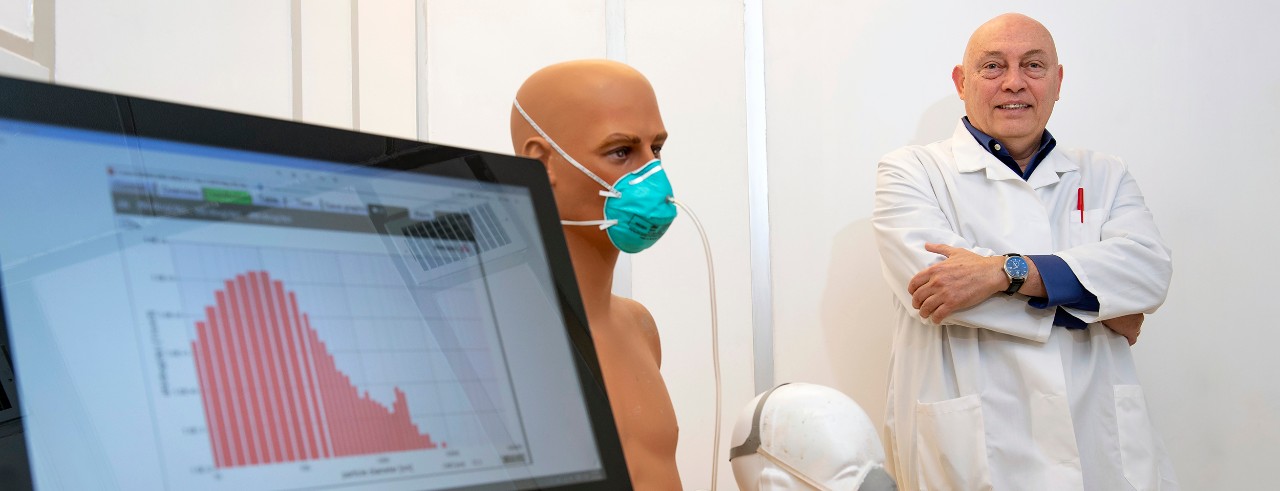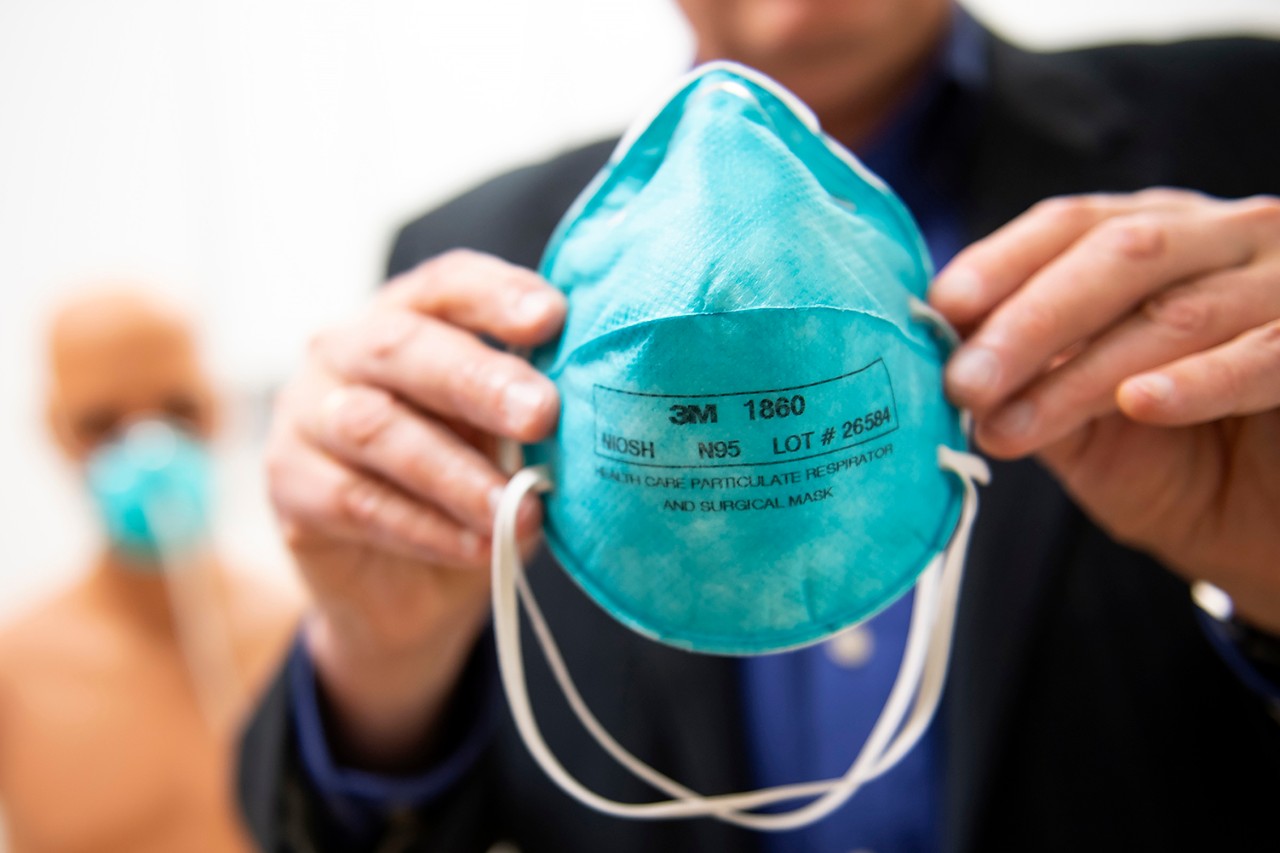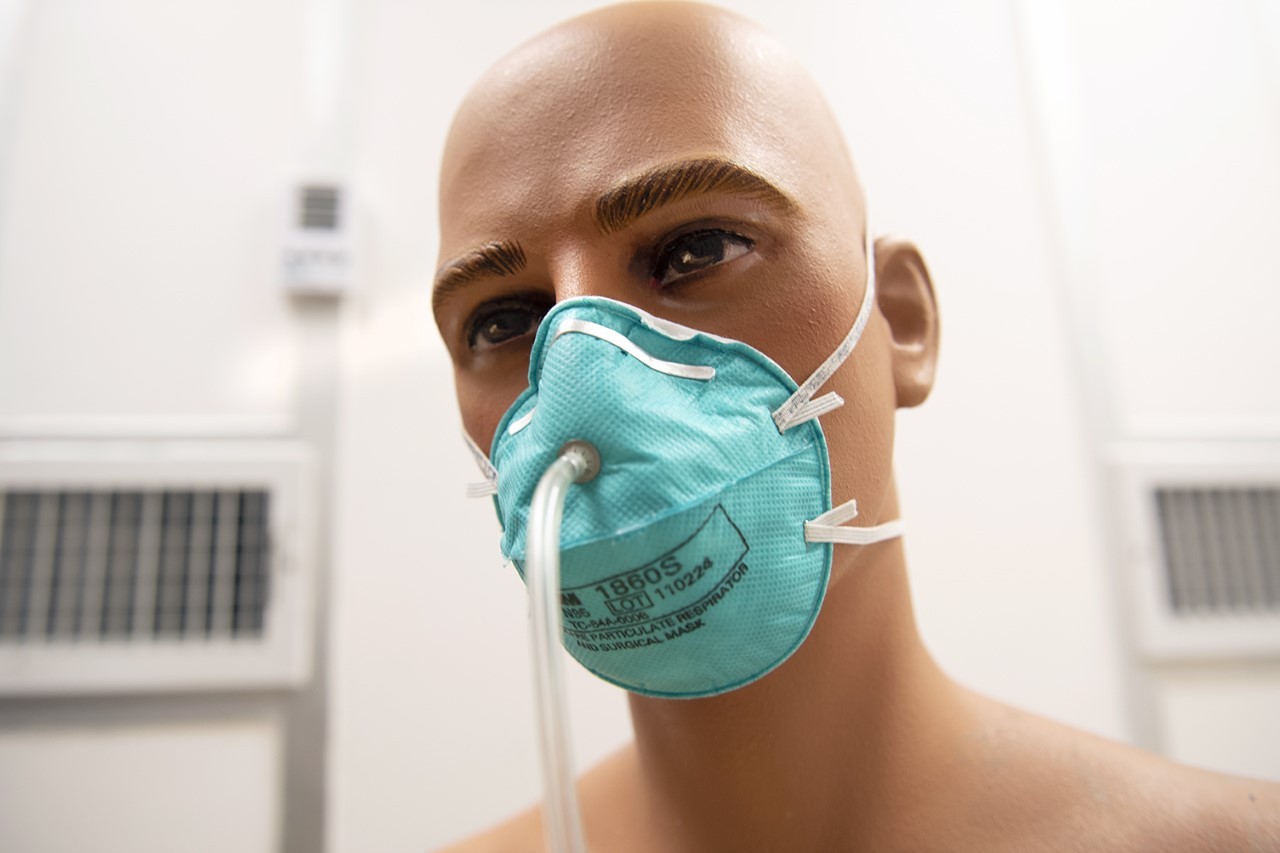
Autoclaving, alcohol not the best options for disinfecting, reusing face masks
UC aerosol expert says efficiency of face masks and respirators drop with sterilization for reuse
A University of Cincinnati researcher is advising against using two widely available sterilization methods to clean disposable surgical masks and N95 respirators for reuse in the midst of the coronavirus pandemic.
Scarcity of personal protection equipment in medical settings has led many health systems to consider sterilizing and reusing masks developed initially as disposable items, says Sergey Grinshpun, PhD, director of the University of Cincinnati Center for Health-Related Aerosol Studies and professor in the UC Department of Environmental and Public Health Sciences.
The Centers for Disease Control and Prevention (CDC) has allowed reuse of N95 facepiece respirators as a crisis capacity strategy.
Grinshpun tested two brands of N95 respirators along with two types of surgical masks — one with high filtration and one with low-filtration abilities — using an autoclave, an apparatus that works similar to a pressure cooker to sterilize items by using steam, heat and pressure during a specific time frame.
“The question for us was, what will happen with the performance of these N95 respirators and the surgical masks after they have spent minutes or longer in the autoclave and to what extent will the heat or steam destroy the structure of the filter making the items less useful,” says Grinshpun.

Shown is a photo of an N95 respiratory mask. Photo by Colleen Kellen/UC Creative + Brand.
Grinshpun also used another decontamination method which employed soaking the respirators and surgical masks in a 70% ethanol treatment for two hours and then drying the devices before their reuse. Alcohol is readily available in hospital settings and utilized for instrument sterilization.
Tests were conducted with disinfection treatments applied up to five times to simulate reusage that might occur in a healthcare setting.
“It almost didn’t matter how many times we decontaminated the protective devices— once, twice or five times — since the major damage inflicted on the performance characteristics of the items followed the first test,” explains Grinshpun. “You are going to lose in performance if these masks or respirators are sterilized using either of these treatments. Of course, quantitatively, the effect differs for different devices.”
The findings of the study are available online in the Journal of Hospital Infection. Co-authors of the study include Michael Yermakov, MD, senior research associate in the UC Department of Environmental and Public Health Sciences, and Marat Khodoun, PhD, research associate professor in the UC Department of Internal Medicine. The team's work on protective devices advances our understanding of how to effectively fight coronavirus and aligns with the values of UC's strategic direction, Next Lives Here.
The study found that neither sterilization in an autoclave nor alcohol treatment caused visible damages to the surgical masks. The 3M 8210 N95 respirator revealed physical damages after implementing a single autoclave disinfection such as partial disintegration of the soft sealing material around the nose clip, and, importantly, loss of strap elasticity, which made this respiratory protective device not reusable.
Meanwhile, testing of the remaining 3M 1870 N95 respirator produced notable, but moderate damage and some detachment along with a minor deformation of the nose foam after a single and multiple autoclaving.
Experimental design of the study included testing each protective device by mounting it on a frame designed to utilize the entire effective filtration area. An air flow rate through the system was chosen to mimic breathing of a health care worker under a moderate and a strenuous workload. To simulate contamination of the test protective devices the items were soiled with protein.

Mannequin fitted with an N95 respirator. Photo by Colleen Kellen/UC Creative + Brand.
“When multiple sterilizations were applied, facepieces were soiled before each autoclave treatment to mimic the device usage in air environments contaminated with protein that may be associated with emission of pathogenic virions by infected persons,” according to the study. Researchers chose to perform five soil and sterilization cycles to simulate a daily reuse of the filtering facepiece over a period of five days.
Grinshpun also says that N95 respirators and some surgical masks rely on fibers that have an electrostatic charge which allows them to capture small particles and protect the wearer. Autoclaving and alcohol treatment weaken this electrostatic charge.
“What happens when you subject something to alcohol, heat or steam?” asks Grinshpun. “These fibers will lose, maybe not entirely, but at least some of their electric charge. This has a detrimental effect on the filter performance so that these protective devices may not be able to capture aerosol participles, including coronaviruses, as efficiently anymore.”
For some N95 respirators their collection efficiency can drop below their certification level of 95% for the most penetrating particle sizes, says Grinshpun.
He adds that performance of surgical masks changes as a result of autoclaving, whether the mask is soiled or not, with the effect being more pronounced for devices which had poor initial filtration capabilities.
He says instead of using autoclaving or ethanol alcohol to disinfect face masks and N95 respirator facepieces, alternative options such as ultraviolet light may be explored. Grinshpun’s study did not look at UV primarily because the investigators intended first to examine methods that are readily available in hospitals.
“We anticipated that UV-based and probably other techniques may be almost as efficient as autoclaving and ethanol treatment in inactivating pathogens but at the same time would not damage the fibers of protective detectives so that the particle collection efficiency will not suffer,” says Grinshpun. “Similar studies can and should be conducted with alternative decontamination methods.”
“The question of how the disinfection treatments impact the performance and integrity of respiratory protective devices remains important for as long as healthcare workers have to reuse these devices due to their shortage of personal protective equipment,” says Grinshpun.
Featured image of Sergey Grinshpun, PhD, in his lab by Colleen Kelley/UC Creative + Brand.
Impact Lives Here
The University of Cincinnati is leading public urban universities into a new era of innovation and impact. Our faculty, staff and students are saving lives, changing outcomes and bending the future in our city's direction. Next Lives Here.
Stay up on all UC's COVID-19 stories, read more #UCtheGood content, or take a UC virtual visit and begin picturing yourself at an institution that inspires incredible stories.
Related Stories
UC celebrates record spring class of 2025
May 2, 2025
UC recognized a record spring class of 2025 at commencement at Fifth Third Arena.
‘Doing Good Together’ course gains recognition
May 1, 2025
New honors course, titled “Doing Good Together,” teaches students about philanthropy with a class project that distributes real funds to UC-affiliated nonprofits. Course sparked UC’s membership in national consortium, Philanthropy Lab.
DAAPworks reveals 2025 Innovation Awards – discover the winning...
May 1, 2025
Visionary projects stole the show during DAAPworks 2025, from wayfinding technology for backcountry skiers to easy-to-use CPR training kits for children.
